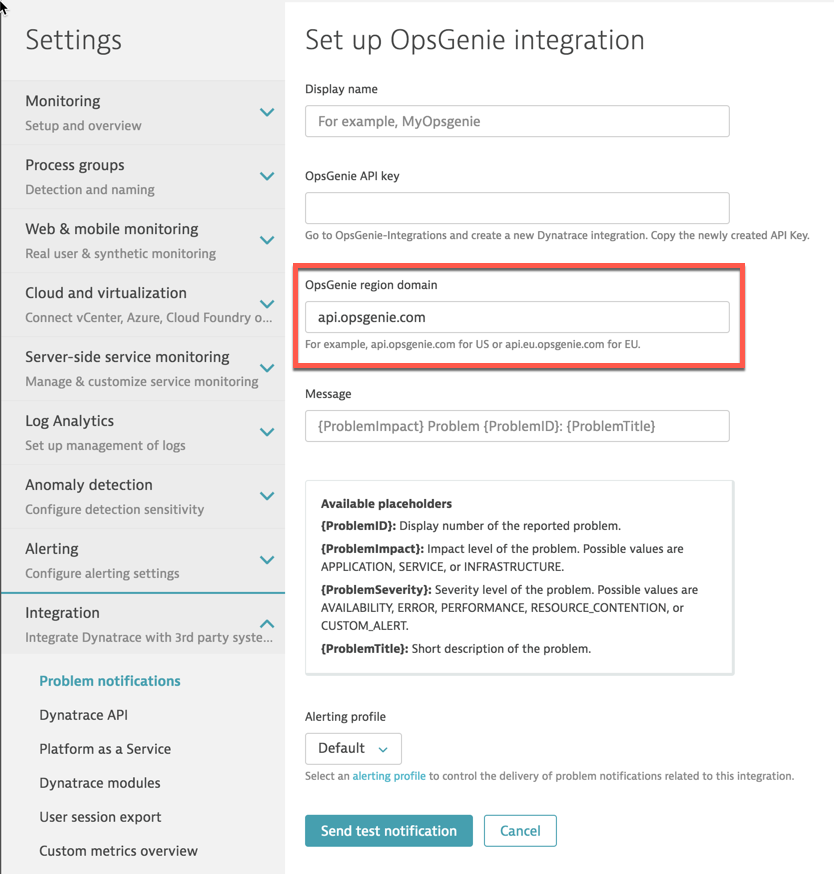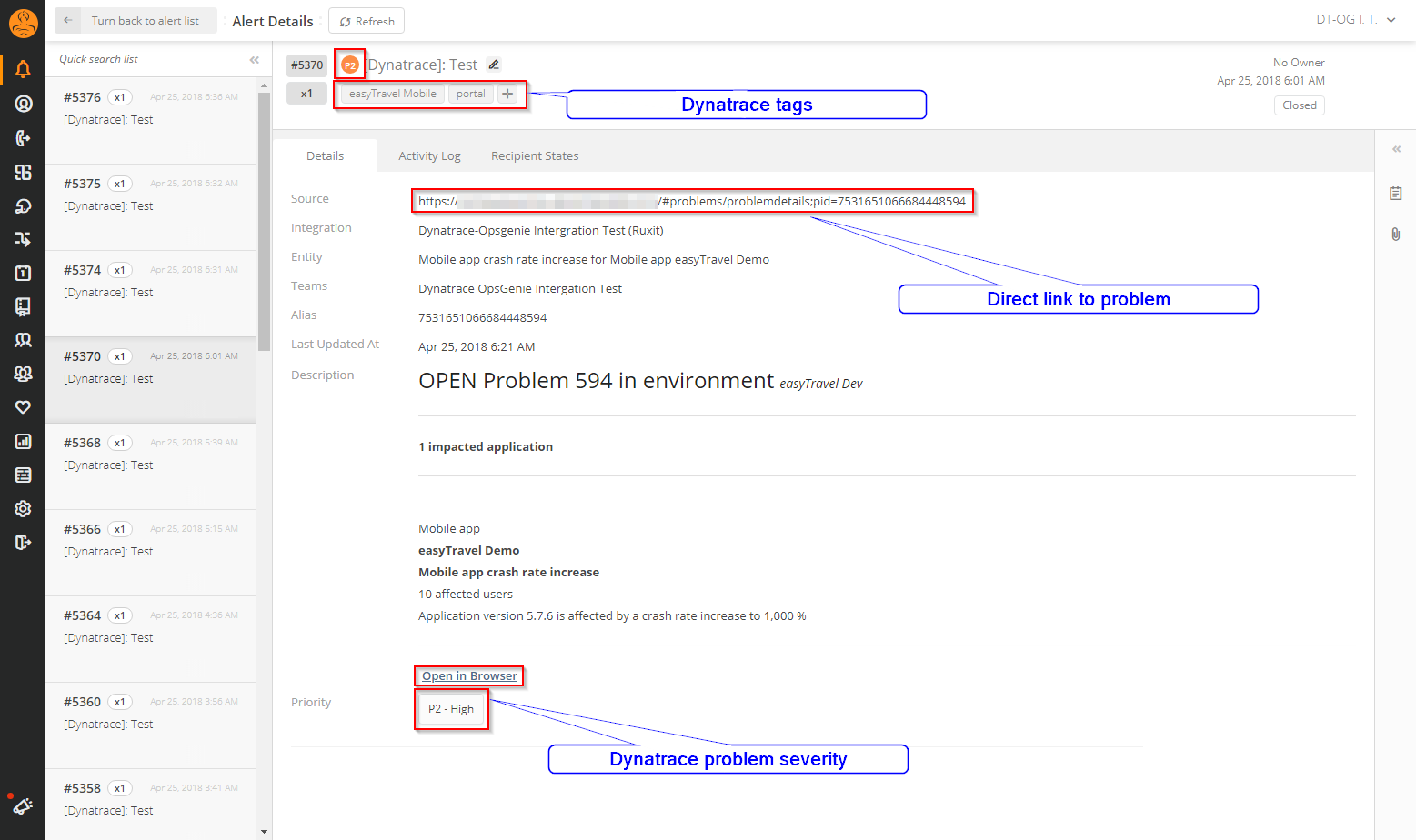OpsGenie integration
DESK offers an out-of-the-box OpsGenie integration that automatically pushes DESK problem notifications to your OpsGenie environment at multiple regions.
To set up OpsGenie problem-notification integration
-
Navigate to Settings > Integration > Problem notifications.
-
Click Set up notifications and select OpsGenie.
The Set up OpsGenie integration page is displayed.

-
Enter the following information:
Display nameUser-defined display name that distinguishes this unique integration from other integrations.OpsGenie API keySwitch over to your OpsGenie account and set up DESK integration. Insert the generated OpsGenie API key into this field.OpsGenie region domainSelect any OpsGenie region by starting to type the region’s endpoint. If this field is left empty, the US region is selected by default.Message
Custom message field that can contain text and problem-related placeholders.
-
Finalize, send a test notification, and click Save.
-
Use the Notification level switches to control the types of problem notifications that are sent to the target system (problems with Applications, Services, and/or Infrastructure).
-
Before you save your OpsGenie integration setup, click Send test notification to perform a test run and ensure that the provided OpsGenie API key is valid.
Available placeholders
{ProblemID}: ID number of the reported problem.{PID}: Unique system identifier for the reported problem.{ProblemImpact}: Impact level of the problem. Possible values are APPLICATION, SERVICE, or INFRASTRUCTURE.{ProblemTitle}: Short description of the problem.
Problem notifications automatically fill in these placeholder values and include them in the corresponding OpsGenie incidents. OpsGenie incidents are automatically created when problems are detected and closed when problems are resolved. Incident details contain the detailed problem information as well as a direct link to the problem in DESK.
Priority levels
DESK availability problems are mapped to OpsGenie P1 incidents, error problems are mapped to P2, slowdowns are mapped to P3, and so on. DESK also pushes the tags of all problem-affected components along with each OpsGenie incident.
The problem URL contains the pure backlink to the DESK environment that pushed the problem incident.
The following image shows a DESK-detected problem pushed over to OpsGenie. The alert includes:
- tags of all problem-affected entities
- a link back to the problem in DESK
- the problem severity detected by DESK mapped to the corresponding OpsGenie priority value.
